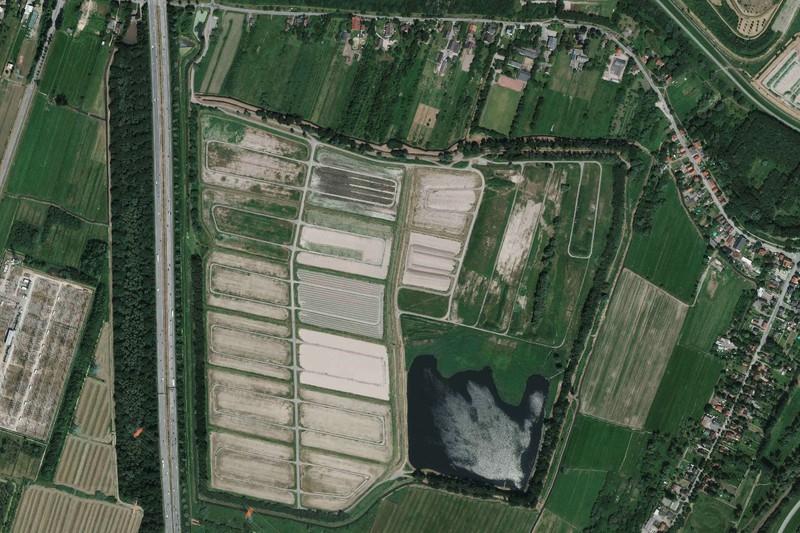Production of raw material
A long-established practice for handling dredged material in Hamburg involves the dewatering of the silty dredged material in dewatering fields. The technical facilities were built in Moorburg and have been in operation since the mid-1980s.
The individual fields range in size from 2 to 4 hectares (ha) and encompass a total area of about 100 ha. They were built on former ‘flushing fields’. After profiling the old flushing fields, a 90 cm-thick 3-layer mineral silt seal with 2‰ inclination was installed as the basis for the dewatering fields. Above the base seal there is a 60 to 90 cm thick sand drainage layer into which drainage pipes are installed at approx. 15 m intervals to improve the drainage behavior. This ensures that no polluted wastewater enters the environment in an uncontrolled manner. The dams of the individual dewatering fields were built from sandy mixed soil and are also sealed.
The annual treatment capacity of the treatment facility in Moorburg is up to a 300,000 m3 profile volume. Basically, the treatment process consists of 4 steps (see also Fig. 1) as follows:
- A hopper dredger pumps the dredged material into the dewatering fields by means of a pipeline up to a height of 1.3 m.
- After a few weeks the silt has settled to the extent that the supernatant transport water can be drained off and the actual drying process begins.
- Once the first drying cracks occur a process of putting the dredged material on heaps starts for acceleration of the subsequent dewatering. This process is repeated until the material requirements for beneficial use or disposal have been met.
- At the end of the dewatering process, the material is removed and trucked to the place of beneficial use or the final disposal sites.
The total dewatering of the silty dredged material takes from 9 to 12 months depending on the weather conditions. The treatment technique does not require complex technologies. However, a major disadvantage is the enormous space consumption associated with the construction of dewatering fields.
Graphical information:


References/web links
- Rettberg, H. (1990). Behandlung belasteter Fluß- und Hafensedimente. Wasser und Boden No. 8, pp. 514-516
- Rettberg, H. (1997). Das Hamburger Baggergutkonzept – Ein Rückblick auf die letzten 20 Jahre. Jahrbuch der hafentechnischen Gesellschaft, No. 51, pp. 185-192
- Detzner, H.-D., and Knies, R. (2004). Treatment and beneficial use of dredged sediments from Port of Hamburg. World Dredging Congress XVII, Hamburg, Germany. B2-1, pp. 1-14
- https://dredging.org/digitallibrary/abstract.asp?v0=212
- http://sednet.org/download/H-Detzner.pdf